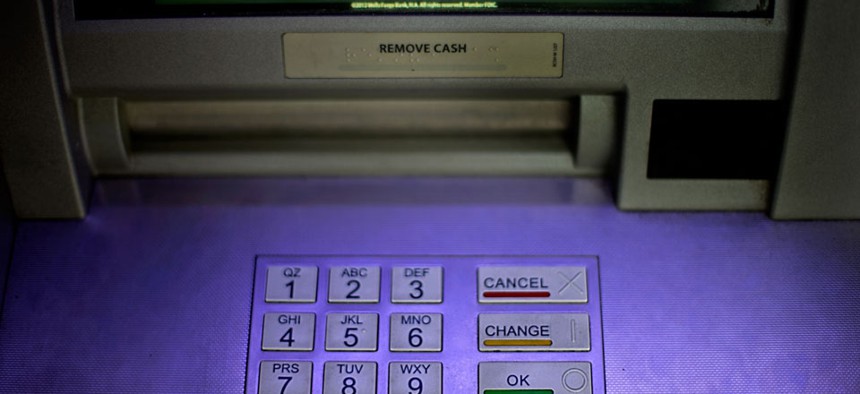We Already Live in the Age of Robots—We Just Don’t Call Them That

David Goldman/AP
We've been using ATMs and GPS for decades.
The head of the world’s biggest pool of venture capital devoted solely to robots is sitting on the edge of his seat, speaking so quickly I can hardly take notes, his boyish enthusiasm reaching a fever pitch. “People usually call something ‘robots’ when they don’t know what they are doing,” says Dimitry Grishin, billionaire co-founder of Mail.ru. “Once it does something useful, we call it a vacuum cleaner, a car, whatever. Look at the cash machine—there are a lot of devices around now that 50 years ago people would call robots.”
We’re sitting in a dim corner of the historic Driskill hotel in Austin, Texas, during the SXSW tech conference. You could hardly pick a less futuristic setting than this wood-paneled, leather-chair-infested lobby, but Grishin’s point is that even this environment demonstrates that the key to understanding how robots will change our lives is to recognize that they already have.
“Take the navigation system in a car,” he says. “Imagine telling people 50 years go there is going to be a person in your car who says ‘go left, go right.’ And yet we don’t call a navigation system a robot.”
We don’t call automatic sliding doors robots, either, and yet a gimmicky, humanoid robot that opened doors for us would certainly be called a robot, even if it had far less intelligence. But why is that?
The word “robot” comes from a 1920 play by Karel Čapek, R.U.R. (for “Rossum’s Universal Robots”), in which beings almost indistinguishable from humans are created to relieve us of drudgery. By the end of the play, they’ve wiped out the human race. Thus was born the notion of robots as lethal Frankenstein-like copies of humans, an idea that has reverberated through science fiction ever since, fromThe Terminator to Battlestar Galactica.
How redefining “robots” unlocks their potential
Grishin’s conception of robots departs from the cultural detritus that has attached to the term, at least in the West. To him, robots are anything that affects the physical world. Drones are robots, but so are internet-connected lightbulbs. What is the effort to bring automation to our homes, businesses and cities but the attempt to turn these physical spaces into robots?
This thinking is reflected in Grishin’s investments. At $25 million, Grishin Roboticsis, as near as Grishin and this reporter can tell, the biggest VC fund in the world focused entirely on robots. But nothing Grishin has put money into resembles the humanoid robots of science fiction.
Instead, Grishin is financing startups like Petnet, a “smart feeder” that allows absent pet owners to dispense kibble for their pets remotely, from any laptop or mobile device. Petnet also produces data on how many calories a pet is consuming, and how that compares to animals of comparable size and breed. It knows whether a pet has eaten and can help an owner design a “customized feeding regimen.” Petnet’s dispenser is indisputably a robot, but would anyone call it that?
“In my view, ‘robots’ is where you start to apply internet technology to the real world,” says Grishin. “It’s [internet-connected] sensors and actuators,” he adds. Just as we no longer describe most companies that use the web to do business as “internet companies,” eventually, we won’t associate the word “robotics” with companies that are putting intelligence into everyday objects, says Grishin.
This view of robots—internet-connected, human-controlled, but with just enough intelligence to act on their own—is almost indistinguishable from the conventional definition of the next stage in the evolution of the internet, known as the “internet of things.” And that’s more or less the point—slowly but surely, as cost drops and their effectiveness increases, we’re filling our lives with robots like cash machines, smart cities and self-driving cars. Recognizing them as such allows us to understand where investment will flow next, without the fears and biases attached to the word “robot.”
Reprinted with permission from Quartz. The original story can be found here.
NEXT STORY: Here's How NASA Thinks Society Will Collapse





